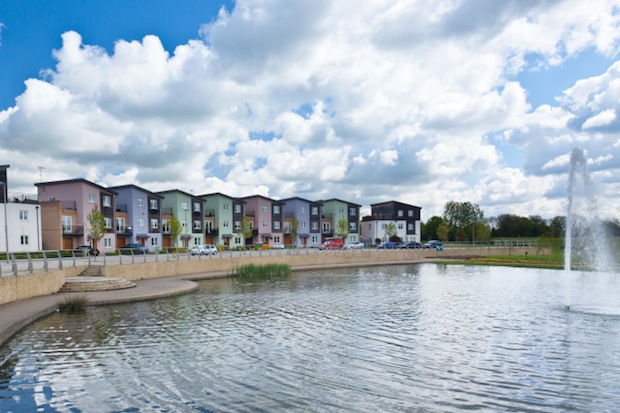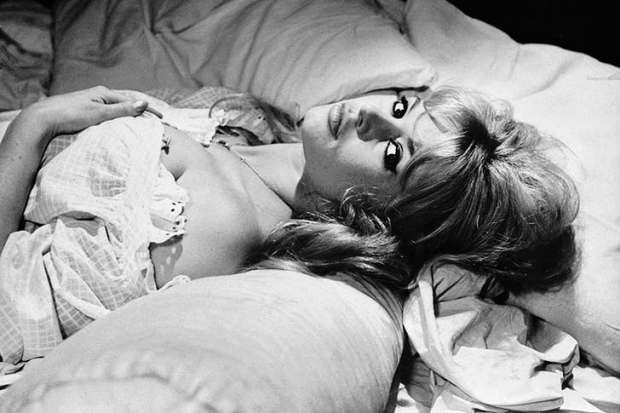Who would ever have thought it, but I have become quite fond of Milton Keynes. Although I live slightly closer to the ancient city of Northampton than to this widely mocked ‘new town’ of the 1960s, I definitely prefer the latter. Northampton is a fine example of the ruination of an English market town by misguided post-war planners; Milton Keynes an example of the fulfilment of their utopian dreams. It is no utopia, of course. With its dual carriageways called ‘boulevards’ (lined with trees still looking as if they will never outgrow the sapling appearance they had in the architects’ drawings), its notorious proliferation of roundabouts, and its bland low-rise office blocks (no building in Milton Keynes is supposed to be taller than its tallest tree), it still feels somehow unreal, as if the planners’ vision of it had never fully materialised.
But it is now a town twice as big as Oxford or Cambridge, full of vitality, and boasting an improbable degree of pride and contentment among its residents. It seems barely to have noticed the recession. And its mile-long steel-framed glass shopping centre, inspired by the architecture of Mies van der Rohe, may or may not deserve its Grade Two status, but it is unquestionably a good and efficient place to shop. Furthermore, there are three or four perfectly good restaurants in Milton Keynes, which is more than can be said of Northampton, and also plenty of easy places to park your car. It may have no identifiable centre (unless you count the shopping mall), nor even a cathedral or university (apart from the Open University); but it still exudes a feeling of self-confidence that Northampton somehow lacks.
But what of culture? Is there any of that in Milton Keynes? Well, apart from the famous concrete cows and other dubious examples of public art, there never used to be much of it; the original planners seem to have overlooked the need for culture. But in 1999, more than 30 years after the town’s foundation, it was belatedly equipped with a splendid 1,400-seat modern theatre and, immediately beside it, with a public art gallery housed in a large white, pink and yellow concrete box. The theatre has been a great success, attracting large audiences not only to pantomimes and other popular entertainments but also to serious drama and to first-class opera performances from Glyndebourne and the Welsh National Opera. The gallery has also been a modest success, especially under Anthony Spira, its charming and dynamic young director of the past five years, who had previously worked at the Whitechapel Gallery in London.
The MK Gallery has no permanent collection but was planned as a showcase for cutting-edge contemporary art, as befitting a city that saw itself as also contemporary and cutting-edge. And Spira has done very well, raising visitor numbers fourfold during his tenure, not only by exhibiting new work by young international artists but also by inviting the participation of local people in workshops, educational projects, and so on. But this is England, and the citizens of Milton Keynes are no different from those of our older cities. What they want in a gallery is not so much art as a café (the single biggest demand of gallery visitors, says Spira); and not so much cutting-edge exhibits as cosy, curious, recognisable stuff. And Spira is providing both these things. A café will come later in a planned £10-million extension of the gallery, but there is already an exhibition on now of items borrowed principally from the country house collections of local gentry called Treasures in MK (until 30 March).
It’s a delightful show, including not only works by well-known painters Gainsborough, Romney, and so on, but also such oddities as a self-portrait by David Bowie, a collection of stuffed pelicans from a now-defunct local zoo and an Aston Martin DB4 sports car built around 1960 at Newport Pagnell nearby. ‘Milton Keynes of course is not primarily known for its culture,’ Spira said at the show’s opening. ‘A review of our last exhibition described Milton Keynes as “a concrete bungle”. But we are working hard to change things and to transform those external perceptions.’
The pity is that most of the owners of the exhibits in Treasures in MK, terrified of burglary, refuse to be identified; so one doesn’t know where the majority of items are normally to be found, nor how close their usual homes may be to the town of Milton Keynes (Spira described the show as ‘somehow a portrait of Buckinghamshire through its collections’, though many of the exhibits actually come from Northamptonshire). But they include fine maritime paintings from descendants of two famous British admirals, Lord Howe and Lord Beatty, who now happen to live about as far from the sea as it is possible in Britain to be (which doesn’t deter Spira from planning more MK exhibitions with nautical themes). In any event, Spira has done something original and interesting. If other provincial galleries were to follow his lead and create exhibitions from local private collections, their visitors might find many astonishing things to see.
Got something to add? Join the discussion and comment below.
Get 10 issues for just $10
Subscribe to The Spectator Australia today for the next 10 magazine issues, plus full online access, for just $10.
You might disagree with half of it, but you’ll enjoy reading all of it. Try your first month for free, then just $2 a week for the remainder of your first year.













Comments
Don't miss out
Join the conversation with other Spectator Australia readers. Subscribe to leave a comment.
SUBSCRIBEAlready a subscriber? Log in